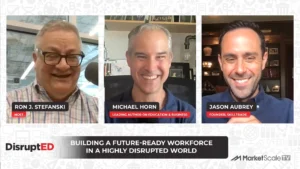What The Inflation Reduction Act Means for Energy Production
On Tuesday, August 16th, 2022, President Biden signed the Inflation Reduction Act into law. The sweeping legislation includes approximately 750 billion dollars in spending to address rising health care costs, tax reform, and green energy initiatives that will help reduce carbon emissions. However, not everyone is quite buying that it will do everything it claims.
Tim Snyder, Economist at Matador Economics, doesn’t think the name is an adequate reflection of the bill as initial estimates note that it could cost upwards of 1.5 trillion dollars.
“The heat is on now – higher than ever – as this bill introduced fifty-two new radical policy agenda items hidden in the bill. It will make inflation worse by making it even more difficult than ever to produce energy from fossil fuels at a time when the increased amount of infrastructure that we need to develop for renewable energy simply does not exist. Experts are telling us that it could take several more years before the US grid system can handle the added demand this administration is pushing on us now,” said Snyder.
“The legislation earmarks $369 billion for climate and energy policies, including financial incentives for consumers and businesses that take steps to boost energy efficiency and reduce greenhouse gas emissions.” And while this is a significant investment, it will take time to implement which does not help address issues consumers and businesses are facing today.
For one, the Atlantic hurricane season (June 1st through November 30th) is in full swing and the National Oceanic and Atmospheric Administration (NOAA) anticipates an above-normal season. Predictions include 14-20 named storms, and 6-10 hurricanes with 3-5 of those being classified as significant with winds of 111 mph or more.
Synder notes that hurricane season and the associated storm activity raise “another layer of risk to put on the energy sector as we look at crude oil prices for gasoline and diesel… The main concern here is the tropical weather scenario tightening in the Gulf and the mid-Atlantic and demand for heating oil for the EU and natural gas could be a very serious issue as we head into mid-fall and early winter. These two could pull the entire energy complex with them as they hit benchmarks for more supply.”
However, the good news is that the U.S. is entering the last week of higher summer demand which ends Labor Day weekend. And, as the weekend approaches energy prices are once again beginning to act seasonally after weeks of prices continuing to drop.
“Over the last few weeks, we’ve been talking about the price of crude oil, gasoline, and diesel slipping off their highs even though they’re showing some stickiness to the levels where they currently reside,” said Snyder.
Recent price margins include crude oil starting the week at 89.41 a barrel and ending at 90.77 and wholesale gasoline starting the week at 2.9517 per/gallon and it rose to 3.0175 per/gallon – both marking a very marginal increase. However, futures were the opposite and retail gasoline fell 0.10 cents per/gallon at the pump. Natural gas rose 0.61 cents per a million BTUs and is likely to continue with the impending EU December 2022 deadline on purchasing Russian crude oil.
“On the demand side of the equation, some fundamentals and a couple of macros played into the mix this week with stories out of the EU stating that they had just purchased the last available futures barrels of crude that could be purchased because of the EU sanctions on Russian crude,” notes Snyder. However, he also mentions that China showed crude oil purchases equal to levels seen in mid-2020.









